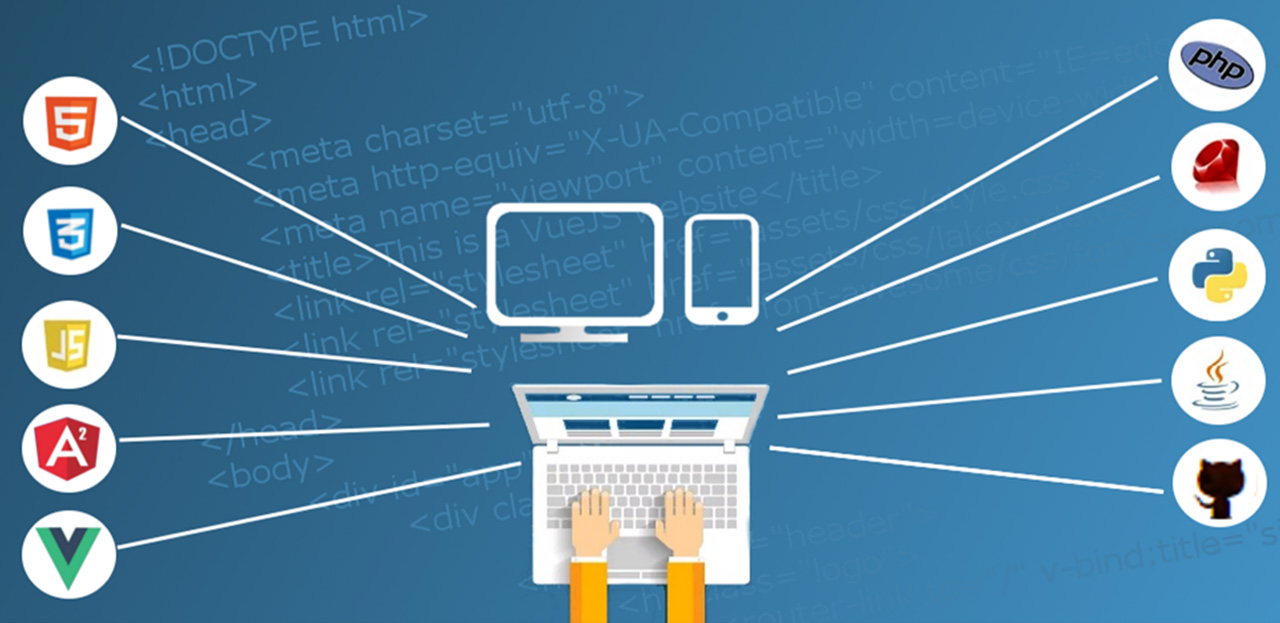
Web Design
Web Design and Development encompasses the creation and maintenance of websites, focusing on both the aesthetic aspects (web design) and the technical functionalities (web development). This field is crucial for establishing an online presence and ensuring user-friendly, responsive, and efficient websites.
Key Components
- Web
Design:
- User Interface (UI) Design: Crafting visually appealing and intuitive interfaces that enhance user experience.
- User Experience (UX) Design: Ensuring websites are easy to navigate and provide a seamless user journey.
- Graphic Design: Utilizing design principles, color theory, typography, and imagery to create engaging visuals.
- Responsive
Design: Designing websites that adapt to various devices and screen sizes,
providing a consistent experience.
- Web
Development:
- Front-End Development: Using HTML, CSS, and JavaScript to build the part of the website that users interact with directly.
- Back-End Development: Managing server-side operations, databases, and application logic using languages like Python, Ruby, PHP, or Java.
- Full-Stack Development: Combining both front-end and back-end development skills to manage all aspects of a web application.
- Content
Management Systems (CMS): Implementing and customizing platforms like
WordPress, Joomla, or Drupal for easier content updates.
- Tools
and Technologies:
- Frameworks and Libraries: Utilizing tools like React, Angular, Vue.js (for front-end), and Django, Ruby on Rails, Laravel (for back-end) to streamline development.
- Version Control Systems: Using Git and platforms like GitHub or GitLab to manage code versions and collaborate with other developers.
- Web
Hosting and Deployment: Understanding various hosting services and deployment
processes to publish and maintain websites.
- SEO
and Analytics:
- Search Engine Optimization (SEO): Implementing strategies to improve website visibility in search engine results.
- Web Analytics: Using tools like Google Analytics to monitor and analyze website traffic and user behavior.
Learning Outcomes
- Technical Proficiency: Mastery of coding languages, frameworks, and tools used in web development.
- Design Skills: Ability to create aesthetically pleasing and user-centric web designs.
- Problem-Solving: Developing solutions to design and functional challenges.
- Project Management: Understanding the workflow of web projects from conception to deployment.
Career Opportunities
- Web Designer: Specializing in creating the visual layout and user interface of websites.
- Front-End Developer: Building the client-side of websites, focusing on user interaction and experience.
- Back-End Developer: Managing server-side functionalities and database interactions.
- Full-Stack Developer: Handling both front-end and back-end tasks, overseeing the entire development process.
- UX/UI Designer: Enhancing overall user experience and interface design.
- SEO Specialist: Optimizing websites for better search engine ranking and visibility.
- A
career in web design and development offers diverse opportunities and requires
a blend of creative and technical skills to build effective, user-friendly web
solutions.
Web design course has four classes for those who are doing two hours. These include
- Early morning class (7:30 am to 9:30 am).
- Mid-morning class (10:00 to 12:00 pm).
- Afternoon class (1:30 pm to 3:30 pm).
- Evening class (3:30 pm to 5:30 pm).
- Late evening class (5:30 pm to 7: 30pm)
NB: Weekend classes available from 8:00 pm to 12:30 pm)
What you will Learn in this Course
HTML (HyperText Markup Language) is the standard language used to create and design the structure of web pages. It defines the content and layout of a web page by using a series of elements and tags.
CSS (Cascading Style Sheets) is a style sheet language used for describing the presentation of a document written in HTML or XML. CSS defines how elements should be rendered on screen, on paper, or in other media, enabling separation of content and design.
A Content Management System (CMS) is a software application that enables users to create, manage, and modify content on a website without needing specialized technical knowledge. It provides an intuitive interface for managing digital content, streamlining the web development process. This training is meant for students who do not want to code. WordPress being the most used CMS package is what the student will be taught on ranging from installation, database creation, plugins, themes, customization until hosting.
PHP (Hypertext Preprocessor) is a widely-used, open-source scripting language that is especially suited for web development and can be embedded into HTML. It is known for its ability to interact with databases, create dynamic content, and serve as a backbone for server-side applications. At our institution, a student will be taught on how to manipulate and make dynamic pages by creating, opening, reading, updating, deleting, encrypting data into and from the server. A student will also be trained on how to collect form data from the inputs and submit them to the server while putting security in mind. At the end of it all, there will be a simple project to be done that will combine all the classes done.
MYSQL is a backend open-source relational database management system that is based on structured query language. At Excel Training Institute, you will be taught the concepts to master for one to become a database administrator. You will also be trained on the concepts one needs in order to create a database, how to create tables, how to manipulate data in the database. You will also be taught on different data types that MYSQL Databases accept.
Got a Question?
We are ready to hear from you anything regarding our institution. Feel free to drop a line and we promise to get back to you within a very short time possible.
